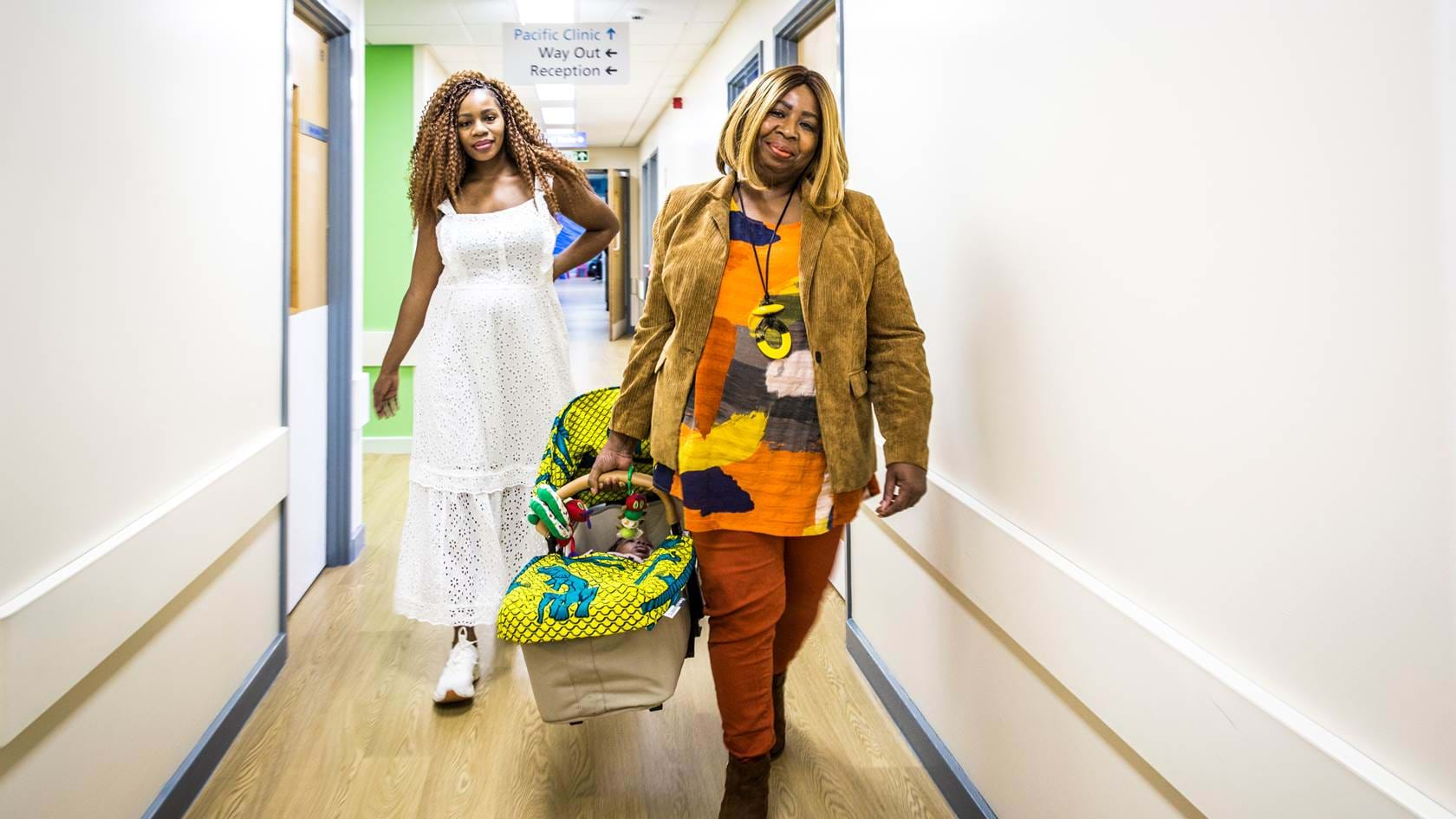News
Life and Birth: how Dragonfly created BBC1’s childbirth doc
20 April 2020

Life and Birth: how Dragonfly created BBC1’s childbirth doc
Known for a popular fixed rig childbirth series, our latest take on the format had to deliver fresh insights, says Dragonfly’s Tom Currie.
While my knowledge of childbirth isn’t exactly encyclopaedic, I was aware that new-born babies didn’t simply slide straight from their mother into a car seat ready to head home. With Life and Birth, we wanted to make a series full of story and heart for BBC1 that showed the real, unfiltered reality of birth, as well as the complex journey it can take people to get to that point.
It was vital that the series was a warm and joyous treat for viewers, but without shying away from the reality of birth, and for the audience to see parts of their own journey to parenthood reflected in the series.
Dragonfly had made 11 series of a certain fixed rig format set in a maternity unit that you may have heard of, so it was vital that this series felt fresh and was an updated take on familiar territory that had its own unique identity.
From our co-exec Simon Kerfoot’s experience of making the last four series of One Born Every Minute, it was clear that there were so many stories that could be told that went further than just the delivery room.
We wanted to also explore intricate cutting-edge medicine on babies inside the womb, specialist clinics for women who have had multiple miscarriages and births that went as planned.
We chose Birmingham as the setting for its hugely diverse population, together with its brilliant and dedicated staff and because it was a national centre of excellence in fetal medicine.
The project was a close collaboration with Emma Loach and Beej Patel from the BBC documentaries team, who were both invaluable throughout the process. Director of content Charlotte Moore had first ordered a proof of concept pilot and as a result commissioned the six-part series.
Selecting the timeframe
Early in the process, we decided with the BBC that we wouldn’t seek out fertility stories, but that the moment of conception to the period a few months after birth would be our timeframe for stories – but all within the hospital walls.
This enabled us to tell stories from the early pregnancy unit and people coming in to have their first scans right through to those whose babies had been living in neonatal intensive care since birth waiting for operations before they could go home.
Each film is a snapshot of multiple stories told across one week from contributors at different stages of their parenthood journey, which together give a rounded picture of modern maternity care.
The series is predominantly shot by a team of extremely talented self-shooting PDs solely using prime lenses, but we deployed a small rig to augment this footage.
The prime lens camera always took the lead in the scenes which makes for an intimate portrait of these monumentally important moments in peoples’ lives as well as bolstering the visual identity of the series.
It was key for the series to highlight important issues such as post-natal depression, miscarriage and still birth – all still quite ‘unspoken’ issues in the wider world, but that affect so many.
This required great sensitivity on the part of our brilliant filming teams, as well as huge trust and understanding from our contributors. In a similar tone to our BBC1 series Ambulance, we wanted to show that even in the most complex and difficult of stories, there was always light at the end of the tunnel.
We were in awe of the incredible selflessness and honesty that these families demonstrated in helping us share these important stories.
During the birth of one my closest friends’ daughters, a Facebook Messenger group was set up – aptly named ‘Labour Live’ – to provide a minute by minute update of how things were progressing. During preproduction, our teams on the ground noticed that people were constantly glued to their phones in the waiting rooms – and there was a surprising amount of ‘detailed footage’ recorded by mums and best friends during the births themselves.
We wanted to find a way to harvest this social media and use it to tell a story – and this became part of the key grammar of the series and helped build its visual identity.
Social media helped to drive our characters’ narratives in the same way a piece of sync or a VO line would. It also allowed us to visually come out of the hospital for a ‘breath of air’ and to see lots of other people’s stories all happening at the same time, even if we weren’t spending time with them on camera.
I had the pleasure of being in the edit suite for the first episode with our fantastically talented lead film editor Tom Dixon-Spain, who was a vital part in forming the shape and style of the series.
Tom’s early decision to try a rich orchestral score from Matthew ‘Mash’ Cracknell for the series was key and makes the magical birth scenes as epic as they deserve to be.
We wanted midwives and paediatricians to watch Life and Birth and think, ‘Yes, that’s a pretty accurate portrayal of what we do every day’. We hope we’ve succeeded and that the audience will enjoy a heart-warming series, full of joy, warmth and miracles and that it will provide a life-affirming treat during these otherwise unsettling times.